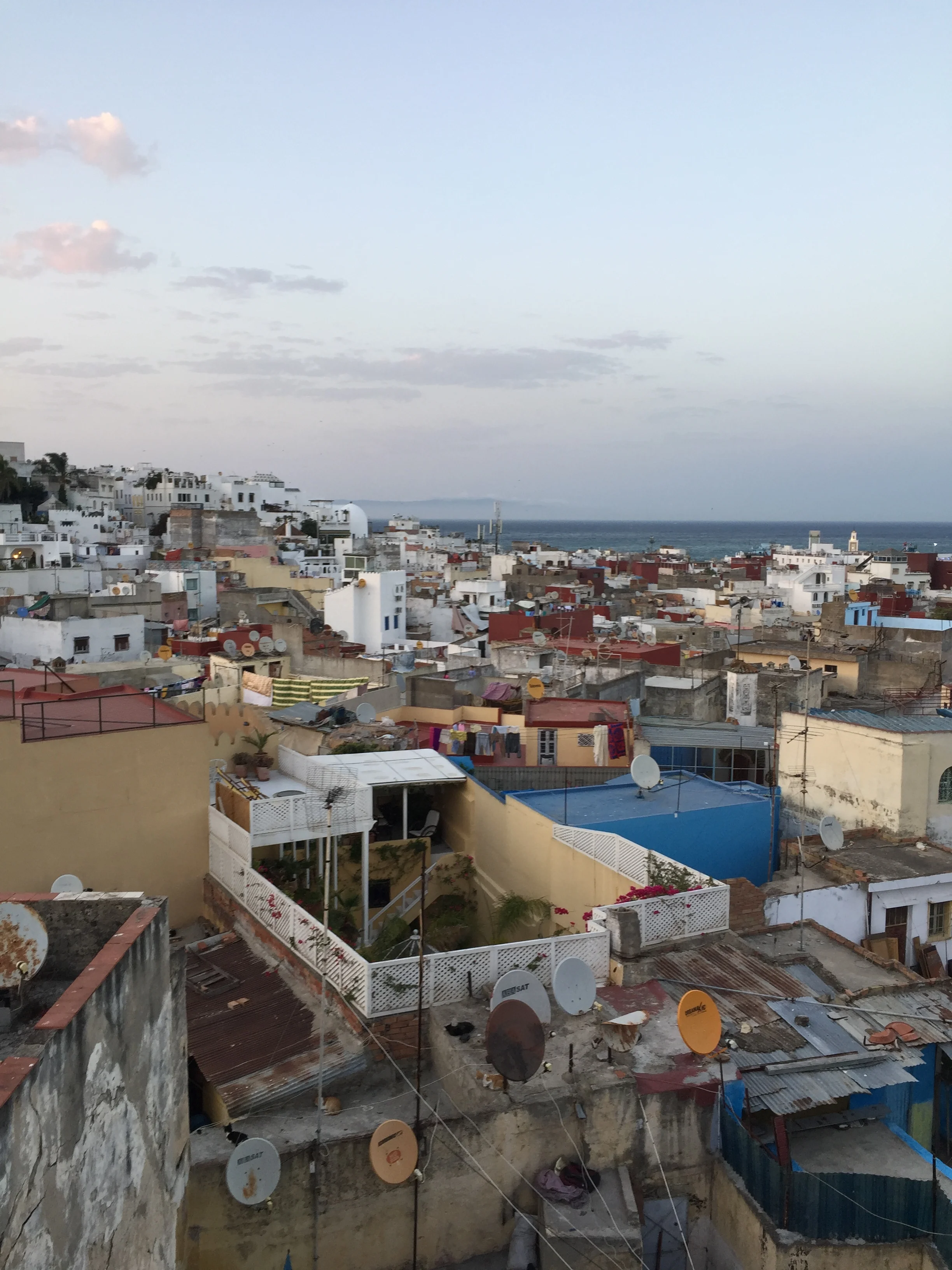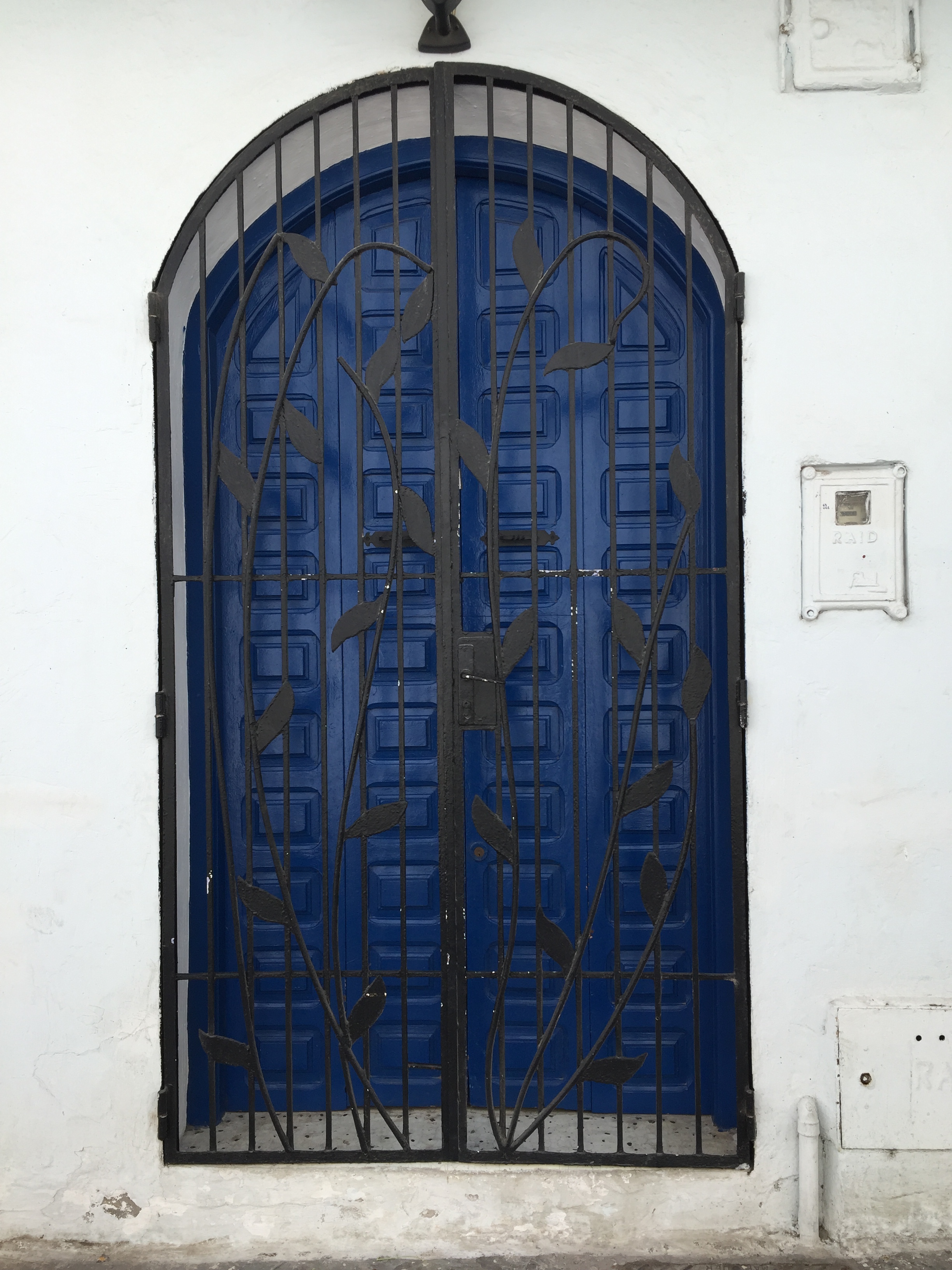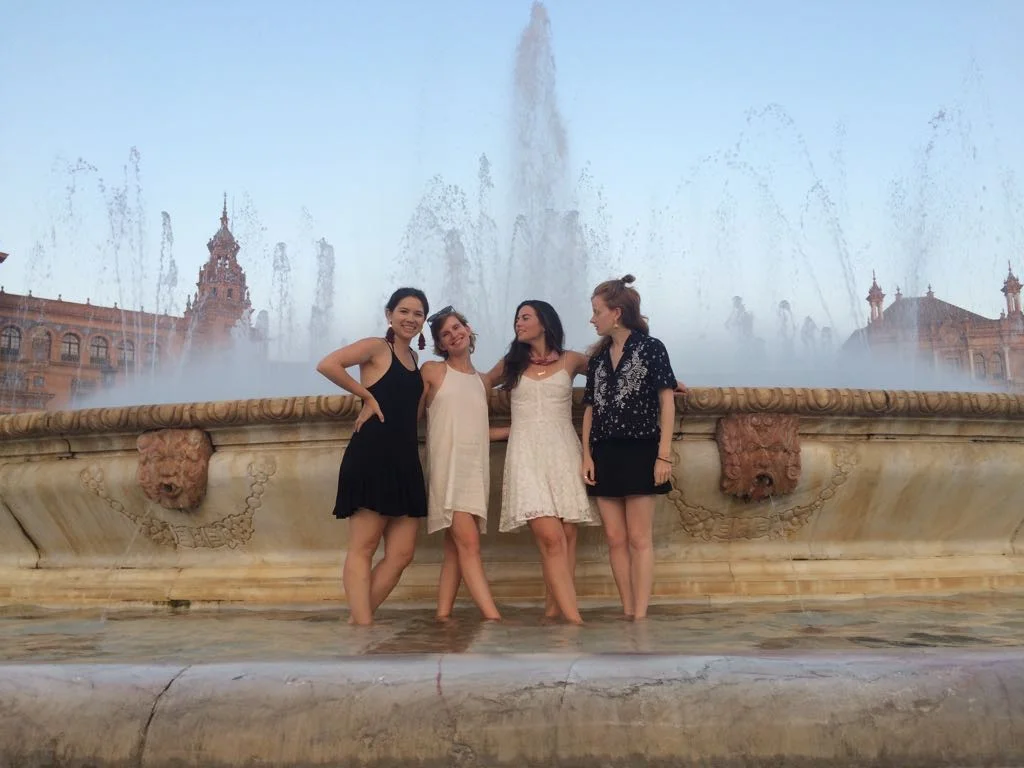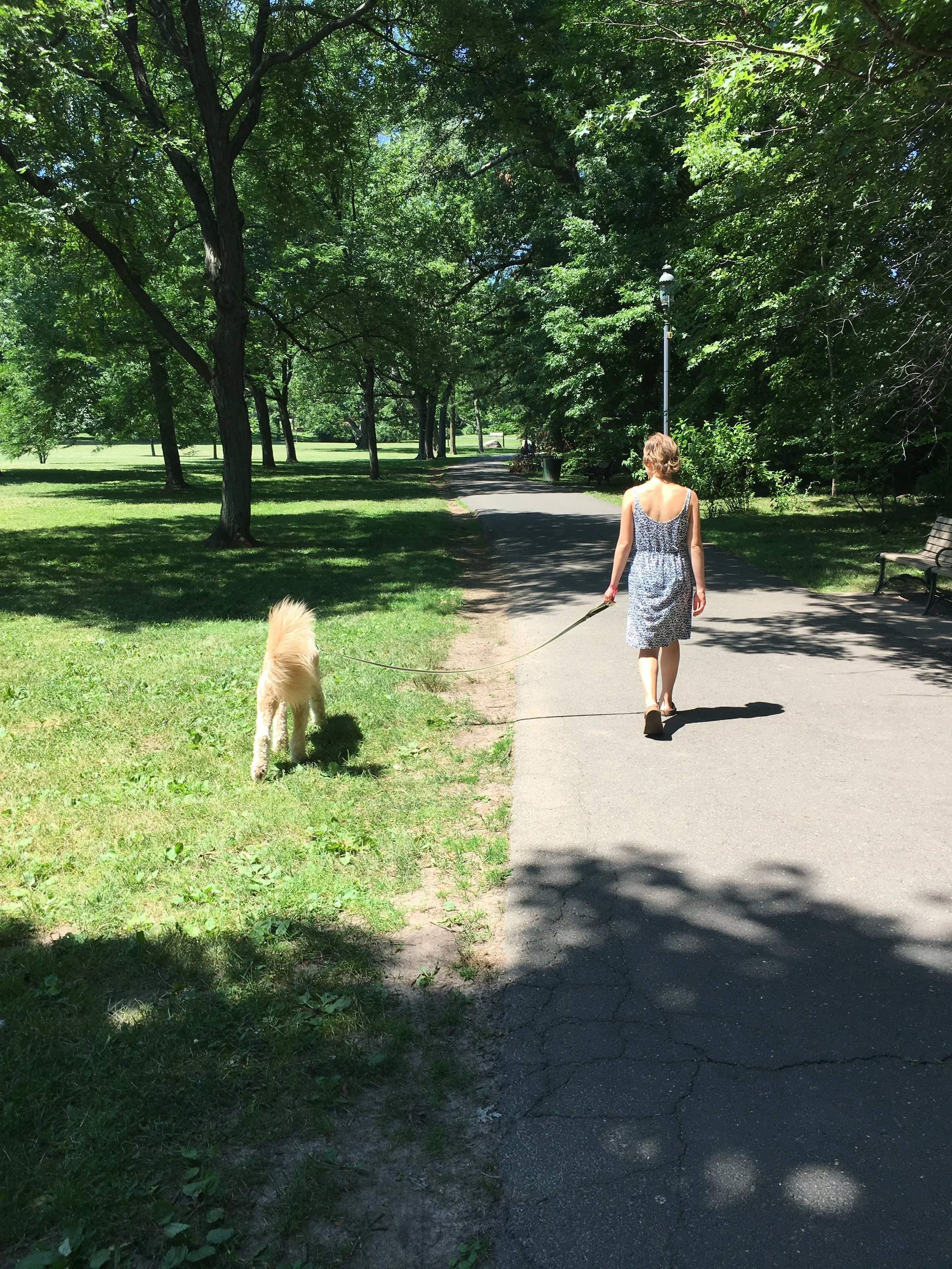Tangier: Quick Moroccan Stop
Warming scents of cumin and saffron wafted through the streets, mingled with putrid smells from the leather tanneries and animal droppings. But also sticky sweet fried pastries and fresh mint for tea.
We were distracted by vibrant colors while dodging donkeys pulling carts on the narrow car-free streets. It was completely overwhelming. It was completely addicting.
This time around, we had three nights before meeting up with friends again in Seville. From Southern Portugal, due to our proximity to Morocco, visiting Tangier seemed like the obvious choice.
Will and I have been constantly comparing our travels this year to our experience in Morocco three years back. Sure, we had traveled together prior to Morocco. But, it was our first time being utterly thrown out of comfort zone together. Navigating the Medina, together. We simply had to go back.
Traveling from Tavira to Tangier is easy in theory. However, the logistics proved slightly more challenging. We were traveling with my very good childhood friend, Johanna.
Once we finally made it to Tangier, it felt both familiar and foreign. To both our delight and disappointment, Tangier was nothing like our memories from Morocco. Sure, there were some resemblances (the scents, the tastes).
But the overall frenzied emotions that our first time in Fez evoked had dissipated.
Perhaps it’s because Tangier has more European influences, or perhaps because we’re now more self-proclaimed seasoned travelers.
Of course, it was still thrilling. The mix of Arabic and French writings are so unfamiliar, and merely walking down the street delivers a jolt of adrenaline.
The allure of Tangier is it’s infectious energy. It’s a tangible feeling. The city has been Europe’s entry point to Africa for centuries. Therefore, differs from the rest of Morocco due to it’s unique and undeniable European influences. In fact, Tangier itself it wasn’t under Moroccan rule for years.
Tangier has long been romanticized by artists and writers. Once recognized as a place to easily indulge in illicit activities, the city has always attracted a wide range of visitors.
However, since 1999, Moroccos’s King Mohammed VI has invested in seriously updating and expanding the outdated infrastructure. As such, a sizable port and Africa’s first high-speed train has renewed Tangier’s polarizing stereotypes.
There’s a juxtaposition between the ancient Moorish Medina and the colonial-era architecture.
Although it’s changed dramatically in recent years due to new business investments, iconic cafes and the rich cultural way of life remain.
One of the most memorable aspects of our first time in Morocco were the accommodations. We stayed in riads, traditional Moroccan houses with an interior courtyard. And typically stunning tile work.
Eager to do so again, we stayed at Riad Tingis, and I couldn’t recommend it more highly.
The rooftop view of Southern Spain and the Strait of Gibraltar made it worth the splurge.
However, it was Omar’s inspiring hospitality that defined our stay in Tangier.
Our first evening, we felt slightly bedraggled from an unanticipated long day of travel. We went to dinner at Restaurant Hamadi, near our riad. We ordered everything I remember loving from Morocco: harira soup, roasted pepper salad, chicken tangine. We cozied up on the red cushions listening to the band playing Moroccan-style music. It wasn’t the best food we’ve had, but the cozy ambiance was everything.
Mornings started early with a full breakfast on the rooftop: breads and pastries, fruit, and olives.
On our first full day, we trekked up to the Kasbah.
The Kasbah is notably where the sultan once lived.
It’s easy enough to explore by winding through the narrow street on foot.
And located atop of the Medina, it’s the highest point in the city.
The view of Spain was beautiful, but I found the alleyways behind the Kasbah to be more memorable.
That’s also when we learned we were in Tangier for the Eid Al-Adha, a muslim holiday that translates to the "Festival of Sacrifice.” More specifically, a sheep is sacrificed and divided into parts and given to the needy and to relatives. From this point on, it was difficult not to notice sheep everywhere.
Near the Kasbah is Cafe A L'anglaise. The vibrantly blue painted cafe decorated with European-Moroccan inspired trinkets.
We initially went to the upstairs terrace for coffee and fresh fruit juices.
It was so pleasant, we went back another day for lunch. However, it ended up being quite the ordeal since there was a miscommunication on whether we ordered. Not wanting to be pushy Americans, we waited it out.
Nearly three hours later, we ultimately were treated to an incredible lunch with complimentary mint tea and dessert. The owner solicited his neighbor to help out that day—the neighbor’s wife was the sole cook. The owner elaborated on the importance of Eid Al-Adha, and assured should we come back, we’ll always be treated like family. These fleeting moments, brief bonds, are the most cherished part of traveling.
Other, meals tended to be less complicated. We befriended a precocious, young girl in a spice shop, who led us to a street-side cafe.
Unclear if she had any affiliation. Regardless, we enjoyed a vegetable tangine stewed in large caldrons.
Also, chicken cous cous and lamb tangine with stewed prunes one evening.
Another day, we took a day trip. Abdul drove us around in a Mercedes W123, stopping at several sites along the way.
We saw different vantage points of the port.
And also wandered around Parc Perdicaris.
The landscape was so lush, and not what comes to mind when I think of Morocco. With more time, I would have loved to go on a hike.
The main attraction was the Cave of Hercules, or Les Grottes d’Hercule. The legend states that Hercules rested here after finishing the 12 feats that promised his immortality. Most notably, the cave opening resembles a reversed silhouette of Africa.
It’s also referred to as the “map of Africa,” and the colors can change depending on the tides. When we visited midday, the fog was substantial.
Although the cave was neat, I preferred the parks and more natural landscape. The cave itself felt a bit like a tourist trap. Regardless, it’s only 30 minutes west of Tangier, and worthy of a day trip. My favorite days, however, were spent wandering the Medina.
The vibrant atmosphere and funky shops made it ideal for aimless exploring. And the people are wonderful. Tremendously warm and welcoming, of all ages.
Each evening was spent relaxing on our rooftop.
As the sun set over the harbor, with sweet mint tea, it didn’t get any better.
As the entire city prepared for the holy holiday the following day, we knew it was time to go. Omar generously gifted us a bouquet of flowers they were using to decorate the riad for the festivities.
We left early the next morning, hoping we didn’t witness or hear any slaughterings. Fortunately, we left early enough, we were in the clear.
Our time in Tangier was brief but impactful. Traveling with Johanna again helped remind me why I love travel so much. The kindness is strangers and the relationships you forge along the way.

































































